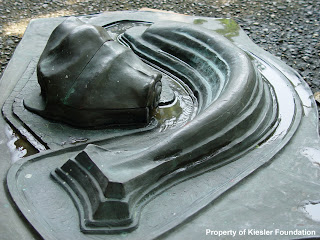



A series of studies involving different patterns projected, mapping or generated along a surface. The fact that a patterned surface can perform as a minimal structure opens the possibility to us that Kiesler's Grotto might be constructed using a frame rather than a homogeneous amorphous mass. This moves us toward an assembly of rigid parts instead of an arrested liquid such as concrete.















